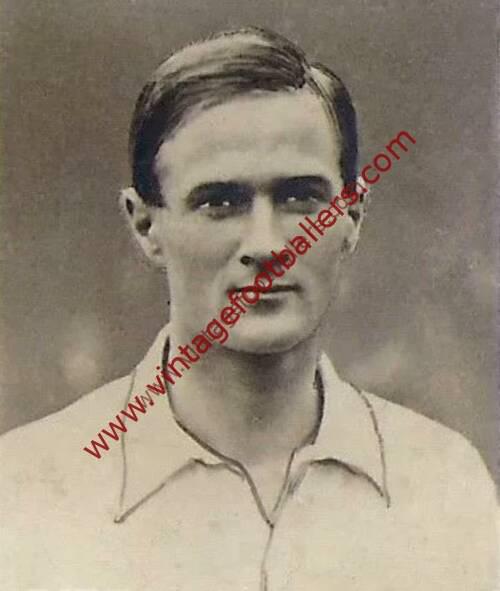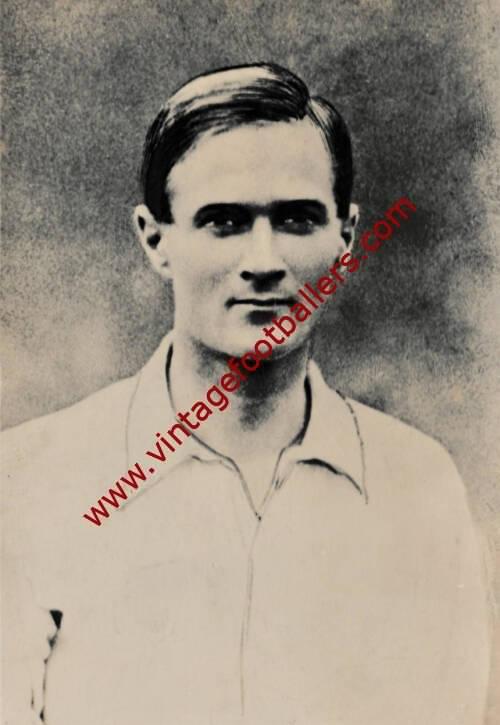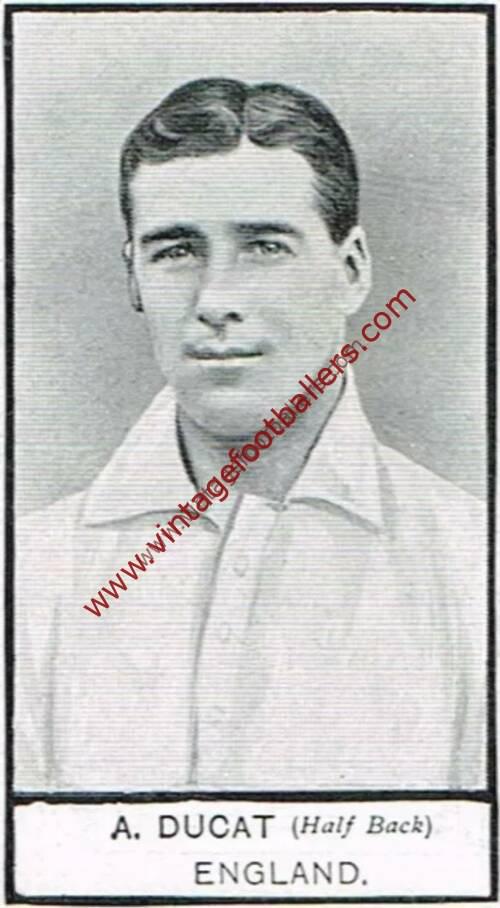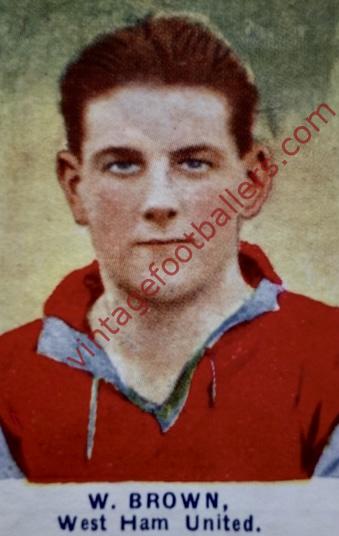Please choose your photo size from the drop down menu below.
If you wish your photo to be framed please select Yes.
Note: 16″x 20″not available in a frame.
Images can also be added to accessories. To order please follow these links
£8.95 – £49.95
Please choose your photo size from the drop down menu below.
If you wish your photo to be framed please select Yes.
Note: 16″x 20″not available in a frame.
Images can also be added to accessories. To order please follow these links
Wynberg, South Africa born centre forward Frank Osborne moved to England in 1911, and played youth football at Netley, near Southampton. He subsequently moved to London, joining Bromley after the end of the First World War in 1919, during which he had served in The Royal Army Medical Corps, before he was signed by manager Phil Kelso for Second Division club Fulham in November 1921, making his Football League debut at Sheffield Wednesday the same month.
At Fulham, playing alongside Andy Ducat and Frank Penn, he was top scorer in 1922-23 accounting for 10 of the team’s 43 league goals, in what was generally a low-scoring season in Division Two. His goal-scoring exploits in a weak Fulham side brought him to the notice of the England selectors who picked him in a 2-0 win against Ireland at The Hawthorns on 21st October 1922 and he won a further cap against France on 10th May 1923 (England won 4-1), although he failed to score in either match. He thus became the first Fulham player to be capped by England. He was also selected to represent The Professionals in the FA Charity Shield match with The Amateurs in a match which The Professionals won 2-0 at Stamford Bridge in October 1923.
Financial pressures led to his transfer to First Division Tottenham Hotspur for £3,500 in January 1924 after 18 goals in 70 appearances. He made a slow start to his Tottenham career, scoring only once in his first season and a half, although he was again selected for England against Belgium on 8th December 1924 (again at The Hawthorns, England won 4-0). In 1925-26 however, playing alongside Jimmy Dimmock and Jack Elkes, he struck a rich vein of form scoring three successive hat tricks in the space of two weeks in matches against Liverpool, Leicester City and West Ham United in October/November 1925, finishing the season as the club’s top scorer on 27 goals.
On 24th May 1926, he was again selected for the England match in Antwerp against Belgium where he finally brought his goal-scoring talents to the national stage, scoring a hat-trick as England came from 3-2 down to take the match 5-3, but despite this achievement it would prove his last cap for England.
In 1928, despite Osborne’s 18 goals which included four in a 5-2 win over defending champions Newcastle United in January, Spurs were relegated to the Second Division. In their first season in the lower division Spurs continued to struggle, finishing in mid-table with Osborne again top-scorer on 16. His final hat-trick came in a win over Stoke City in October 1929, when he scored all three of Spurs’ goals. In June 1931, he was sold to fellow Second Division side Southampton for a fee of £450, surprisingly large for a player now in his mid-30s, after 82 goals in 220 appearances.
He was unable to reproduce his goal scoring form at The Dell, failing to score either in his 20 appearances in either the League or cup. In May 1932, the club were suffering serious financial problems and Osborne was placed on the transfer list as manager George Kay attempted to trim the wages bill, as Osborne’s “wages of £8 in the winter and £6 in the summer were considered to be too extravagant”. At this stage Osborne contemplated retirement, but remained at The Dell for a further season before returning to London in 1933 to work as a sales representative for Fulham chairman John Dean’s company in Putney.
In March 1935, he was invited to join the club’s board of directors, after special dispensation from the Football Association, thus beginning an involvement with the club that would continue, in various roles, right up to his death over fifty years later.
When manager Jack Peart died in September 1948, the board offered the position to Frank Osborne, who reluctantly accepted. From 1948 until his retirement in November 1964 at the age of 68, Osborne had some managerial responsibility at the Cottage, either solely or with a team manager, whilst he became general manager or secretary manager.
His was a unique career, matched only in its longevity by his former playing colleague and subsequently trainer, Frank Penn. The two made their debuts within two years of each other (Penn was the earlier) and they retired within six months of each other (Penn was the later).
Although a player of some renown in his day, Osborne was not a track-suited manager. Intensely superstitious and fond of practising his golf swing in his Cottage office, he steered Fulham to the Second Division title in his first season (1948-49), with the assistance of team manager Eddie Perry.
For the next four seasons, Osborne was the general manager and assumed responsibilities for the team again in October 1953 for another couple of years until the next team manager was appointed in January 1956. Whilst he was not necessarily in charge of team affairs, Osborne was the key figure at Craven Cottage throughout the post-war period right up to his retirement.
His younger brother Reg Osborne had eleven seasons with Leicester City through the 1920’s and early 1930’s, making just short of 250 appearances for The Foxes at left back, while another brother, Harold, made one appearance for Norwich City in 1924.
NB in the photograph he watches Billy Benton of Blackpool clearing the ball in a match in December 1923. While probably taken at Craven Cottage in a 3-2 win for Blackpool, it could have been taken a week later at Bloomfield Road in a match Blackpool won 3-0.
| Weight | N/A |
|---|










